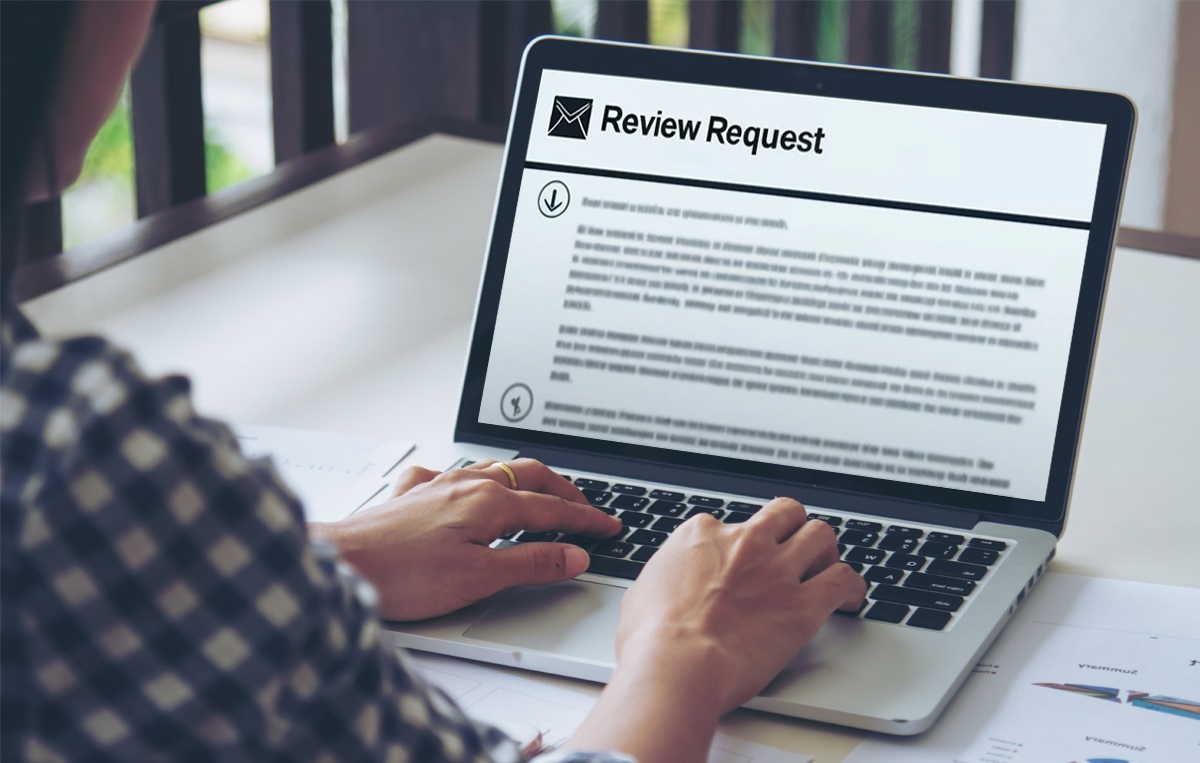Social media is changing rapidly, and staying ahead of this curve is essential for any brand looking to make an impact. One of the most effective ways is to create an inclusive Instagram marketing strategy that helps you hit the mark and achieve your business goals.
However, with constantly changing algorithms and user behaviors, it’s essential to regularly update your Instagram strategy.
An Instagram audit is a powerful tactic for uncovering hidden opportunities, highlighting areas for improvement, and setting the stage for boosting engagement and growth.
Whether you’re a social media manager or just starting out, auditing your Instagram account at regular intervals is your secret weapon to growing your presence and ensuring your efforts align with your business goals.
This step-by-step guide explains the entire process of auditing your Instagram account, plus it includes a free checklist to give you a headstart.
What is an Instagram audit?
An Instagram audit is a systematic review and analysis of your Instagram account to evaluate its performance and effectiveness and optimize the strategy. The process involves examining several crucial aspects of your Instagram account, including your profile, content, engagement metrics, audience demographics, and more.
The goal is to identify the strengths and weaknesses of your strategy and optimize it to improve the overall performance.
An Instagram audit is a crucial part of a broader social media audit and can help you fine-tune your approach and achieve your social media goals successfully.
Now that you know about audits, we are good to go to the next step.
How To Do Instagram Audit in 2024 – 9 Steps
Conducting a thorough Instagram audit involves a step-by-step analysis of your profile to ensure it aligns with the overall business goals, maintains high quality, and effectively engages with your audience.
Here’s a detailed guide on how to carry out an Instagram audit in 2024:
Step 1: Define Your Instagram Goals and KPIs
The first and foremost step is to identify your social media goals and key performance indicators (KPIs). Goals and KPIs provide a framework for measuring the success of your Instagram account and guiding your strategy. Your goals and KPIs will vary depending on whether you are a business or a creator.
For example, if you are a creator, you might be looking to increase brand awareness and drive website traffic, and if you are a business, your goals might be to generate leads or boost sales.
Determine what you want to achieve with your Instagram account and define your goals. Use SMART goals (Specific, Measurable, Achievable, Relevant, and Time-bound) to ensure your objectives are clear and actionable.
For KPIs, select metrics that will help you measure progress toward your goals. If your goal is to increase engagement, your KPIs might be likes, comments, shares, and saves. If your goal is to drive website traffic, track click-through rates and link clicks.
Step 2: Check Your Branding, Aesthetics, and Tone
Once you have defined your goals and KPIs, your next step is to analyze your Instagram business profile and how it is being used for branding. Let’s not forget that Instagram is a visual platform, and for a brand or creator to shine on it, consistent branding is a non-negotiable element of a marketing strategy.
Profile picture and username: Start by looking at the username and profile picture (DP). These are the first things users see when they visit your Instagram profile. Ask yourself if the username and profile picture convey what your brand does. Is your profile picture a high-quality image or logo that perfectly represents your brand?
Profile Bio: Your bio should clearly state who you are and what this profile is about. Though Instagram gives you limited real estate for your bio, just 150 characters, it becomes essential to maximize this space. Ask:
- Does your bio give you a clear image of what the brand does?
- Have you included keywords in your bio?
- Does your bio have hashtags?
- Does your bio include a call-to-action (CTA)?
Visual consistency: Are your feed posts in sync with your brand look and feel? Are you using consistent colors, fonts, filters, and themes across your posts, carousels, Stories, Reels, and Instagram Highlights?
The tone of voice: Review the captions of your posts and check if they reflect your brand’s voice. Is the tone professional, friendly, humorous, or casual?
The moral of the story is to identify whether your Instagram profile looks spot-on or not and use the outcomes as guiding principles to make sure it matches your branding strategy.
Let’s take an example of italia24h, a travel guide brand based out of, you guessed it right, Italy. See how their username and profile picture clearly show what the account is about and how they are using bio to communicate what the brand does flawlessly:
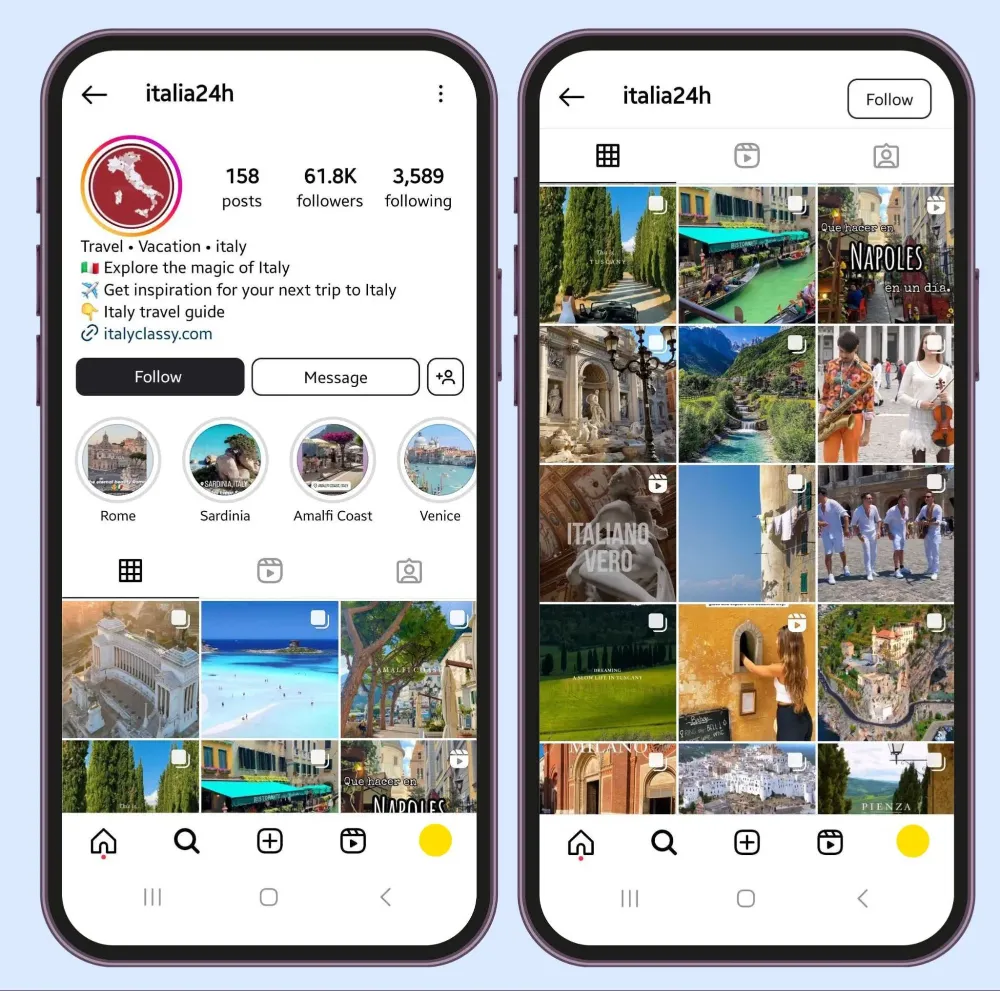
Also, look at how beautiful their Instagram grid layout is.
Tip:Create a brand style guide that outlines your branding, visual, and tone guidelines. You can use tools like Canva to design consistent and visually appealing graphics.
Done reviewing your IG profile, its time to dig down into your content.
Step 3: Analyze Content Quality and Relevance
Content is the cornerstone of your Instagram marketing strategy. Having high-quality, relevant content helps you grab the attention of your audience, foster engagement, build trust, and drive meaningful interactions.
To reach the masses, you need content that maintains a consistent visual style and aligns with your brand and target audience. The best approach is to review your posted content and rationally analyze it.
You can ask yourself:
- Are your Instagram posts of high quality and relevant to your target audience?
- Are your posts optimized for Instagram?
- Are you using the right Instagram image size for your posts?
- Are your posts looking blurry or not clear?
- Are you using similar filters, color schemes, and composition styles across Stories, feed posts, and Reels?
- Are you using the correct Instagram Reel dimensions?
- Are the post captions engaging, and do they have a hook?
This will help you break down your content strategy and determine whether you’re making the right efforts. You will also be able to spot content that is unwanted or needs to be removed.
Take the example of @theloopywhisk – an Instagram food creator. Look at how she crafts her content and maintains consistency in her posts. All of her posts are purely crafted based on her target audience.

Reels, images, carousels, feed posts, and stories are all of the highest quality and properly synced with the profile.
PS: Always remember that knowing what not to do is as important as knowing what to do.
Step 4: Check For Content Mix
The beauty of social media is its capability of housing a diverse variety of content. This diversity entices and motivates viewers to stay hooked on your videos and get their daily dose of dopamine.
For businesses and creators, this is a proven practice for hooking the existing audience and increasing their reach. The Content mix involves both formats and topics.
Here is how you can review your content:
- Are your feed posts about educating your audience, entertainment, promotion, or sales?
- Do you use different content formats like Instagram Stories, carousel, Reels, Live, or Guides?
- If you’re a business, are you using product shots, behind-the-scenes (BTS) footage or user-generated content?
Asking yourself or your clients these questions will help you understand what new opportunities you have that can be leveraged.
At last, it’s all about maintaining a balanced mix of all to keep your audience hooked and only keep the best-performing content. Use a content calendar to plan your content and keep track of which posts are going live and when.
Step 5: Establish Instagram Benchmark
A benchmark is a standard point of reference against which you can measure and compare your performance. While doing an Instagram audit, benchmarks can help you compare your Instagram metrics against industry standards, competitors, or past performance to reveal how well your Instagram profile is doing.
The purpose of benchmarks is to help you identify areas where you excel and areas that need improvement. Benchmark assists you in setting realistic and achievable goals based on your historical data and your industry.
Here is how you can establish benchmarks:
- Identify competitors and industry leaders – List your main competitors and review the performance of your direct competitors, looking at their engagement rates, follower counts, content types, and posting frequency. Select accounts that are similar in size and scope to your own.
- Gather historical data – Collect the past historical data of your Instagram account using Instagram Insights. To make data collection streamlined and smooth, you can use Instagram analytic tools like SocialPilot to gather data on key metrics. Examine your profile performance, engagement rates, follower growth, post-performance of Stories, Reels, and feed posts, and posting frequency in one place and export it in a PDF.
- Understand industry standards – Research benchmarks specific to your industry to see how your performance compares to typical standards within your niche.
Once you have established the benchmarks, you will be able to understand your Instagram account performance and make informed decisions.
Step 6: Review Your Instagram Engagement
One way to understand how well your content is performing is by looking at your engagement rates. Engagement rates give you a clear understanding of how well your audience is perceiving your content.
Are they commenting on your fashion Reels? Are they saving your Instagram guides? Are they sharing your Reels in Stories? You get to know this all.
To review your Instagram engagement, ask questions like:
- Is your audience commenting on your posts?
- Do they tag you in UGC?
- Are they sending your DMs related to your products/services, and are you replying to customer DMs?
- Are your posts getting saved?
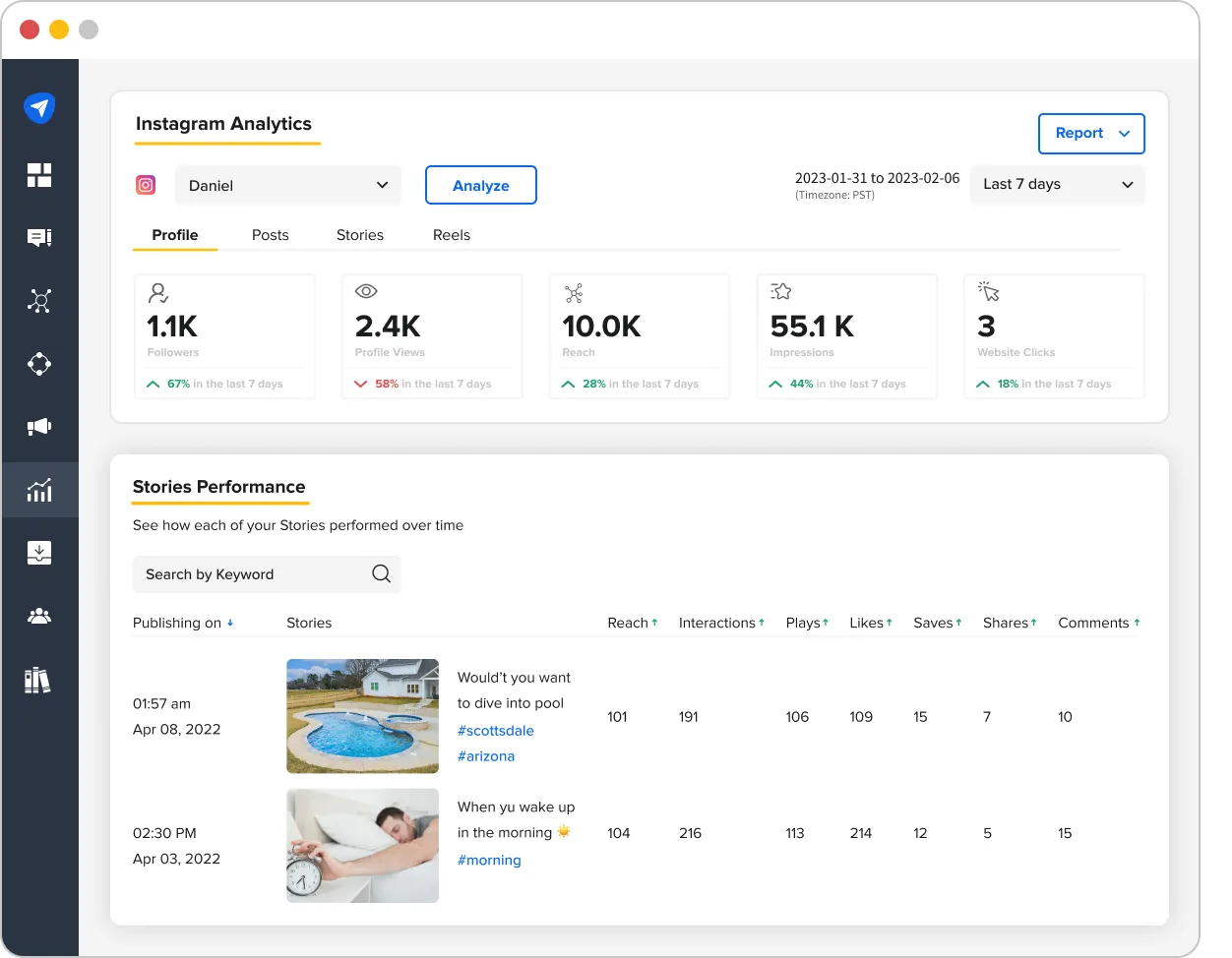
Tip:You can use native analytics or SocialPilot to get access to all this data.
Step 7: Check Instagram For Fake Followers
Everyone wants to grow their Instagram following, but it turns out to be a nightmare when you see a bunch of profiles with no profile pictures, minimal posts, weird usernames, and no followers. Guess what? These are either bots or fake followers.
Fake followers can skew your engagement metrics and harm your hard-earned credibility. Once you spot the bots, you need to remove them from your following or block them.
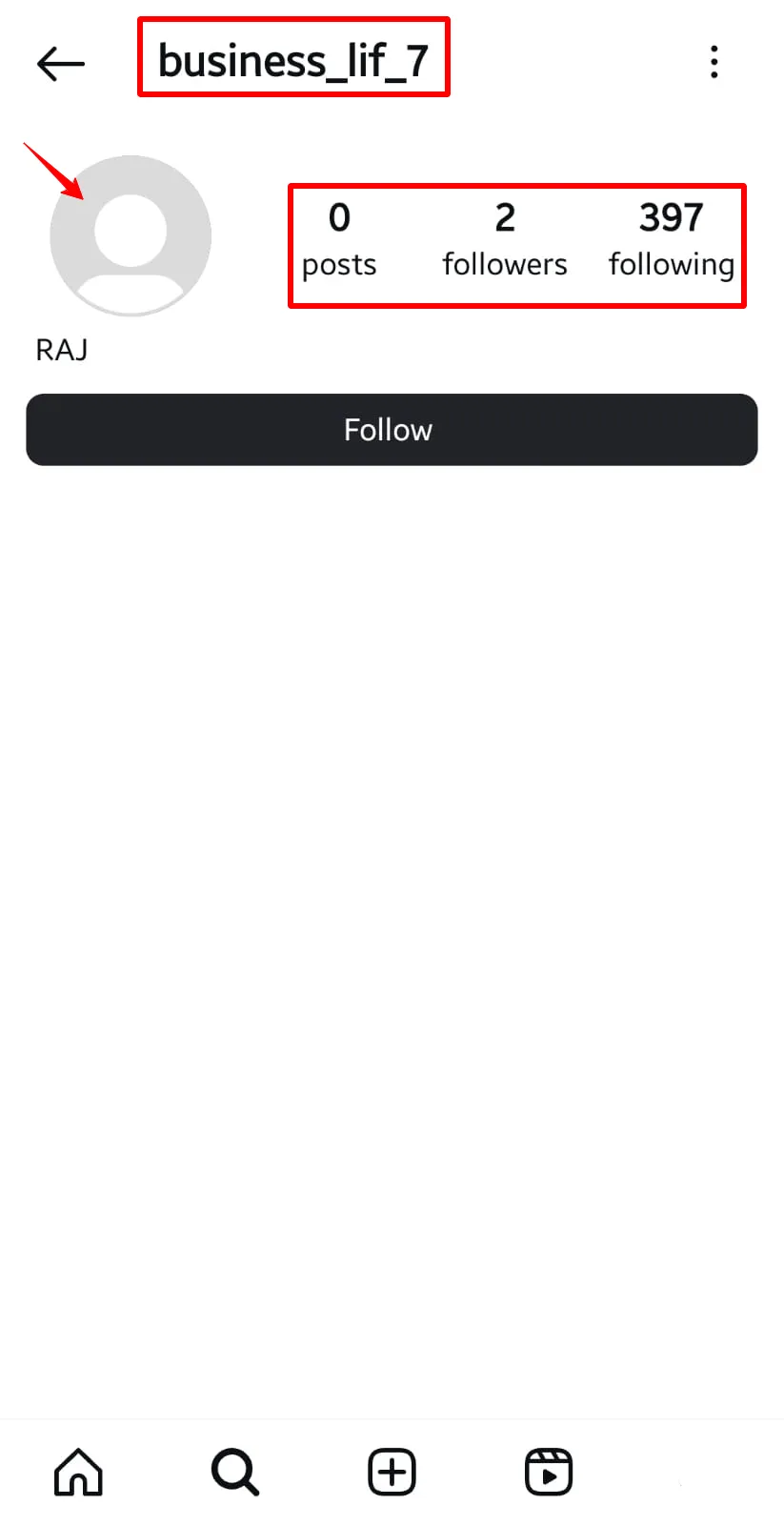
This will slightly reduce your follower numbers, but in the long run, it will save your account and avoid conflicting with your engagement metrics.
Tip: Use tools like Modash to find fake followers and regularly clean your follower list to maintain authentic engagement. Focus on building an organic following through genuine interactions and high-quality content.
Step 8: Assess The Best Performing Content
Social media is all about trial and error. Once you find the magic recipe, you just need to replicate it and enjoy the results. Understanding what content is performing the best helps you replicate success and engage your audience more effectively.
You identify and analyze posts that have received the best engagement on your Instagram account. This helps you create similar content, increase engagement, and improve content strategy, leading to better ROI.
Here is how you assess your best-performing content:
- Identify the top-performing posts based on likes, comments, shares, and saves.
- Look for patterns in the types of content that perform well and consider factors like content format and theme.
- What was the tone and length of the caption? Did it include a call to action?
- Look for the post-publishing time. Consider the day of the week and the time of day.
- What hashtags were used? Were they niche-specific or popular tags?
By the way, hashtags play a significant role in expanding your reach and helping users discover fresh content. Analyze hashtags to find out which ones garnered you the best reach.
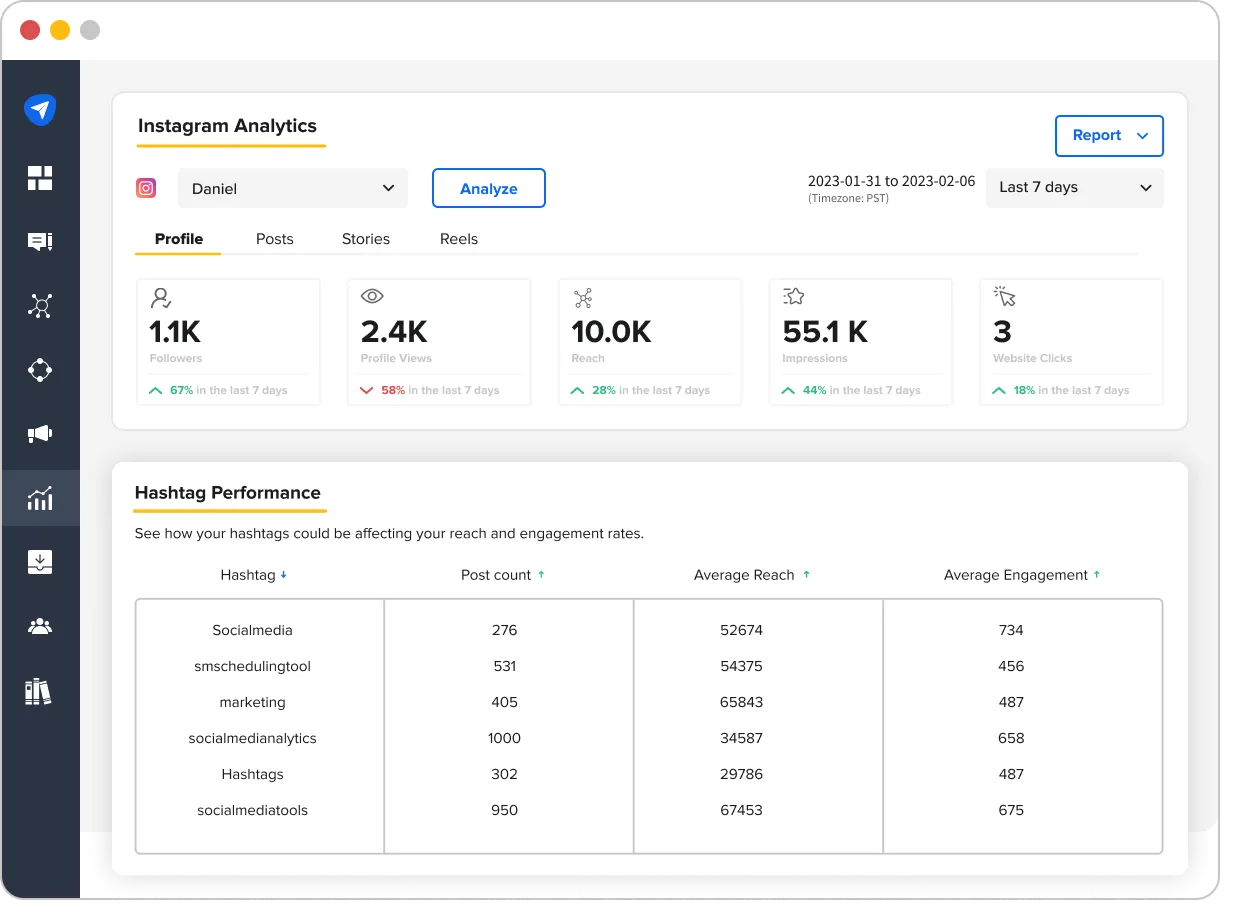
Once you have done this, you will be able to gather a lot more data about the performance and use it to update your content strategy and effectively achieve your goals.
Step 9: Examine Your Posting Frequency
The final step of your puzzle is to analyze your posting frequency. To grow big on Instagram, you need to understand how the Instagram algorithm works. What metrics it looks at and posting frequency is surely an essential key part of it.
By maintaining a consistent posting schedule, you engage your audience and achieve a steady growth rate.
Examine your frequency by determining how often you post on Instagram and comparing it to your engagement levels. Identify the best time to post based on when your audience is most active.
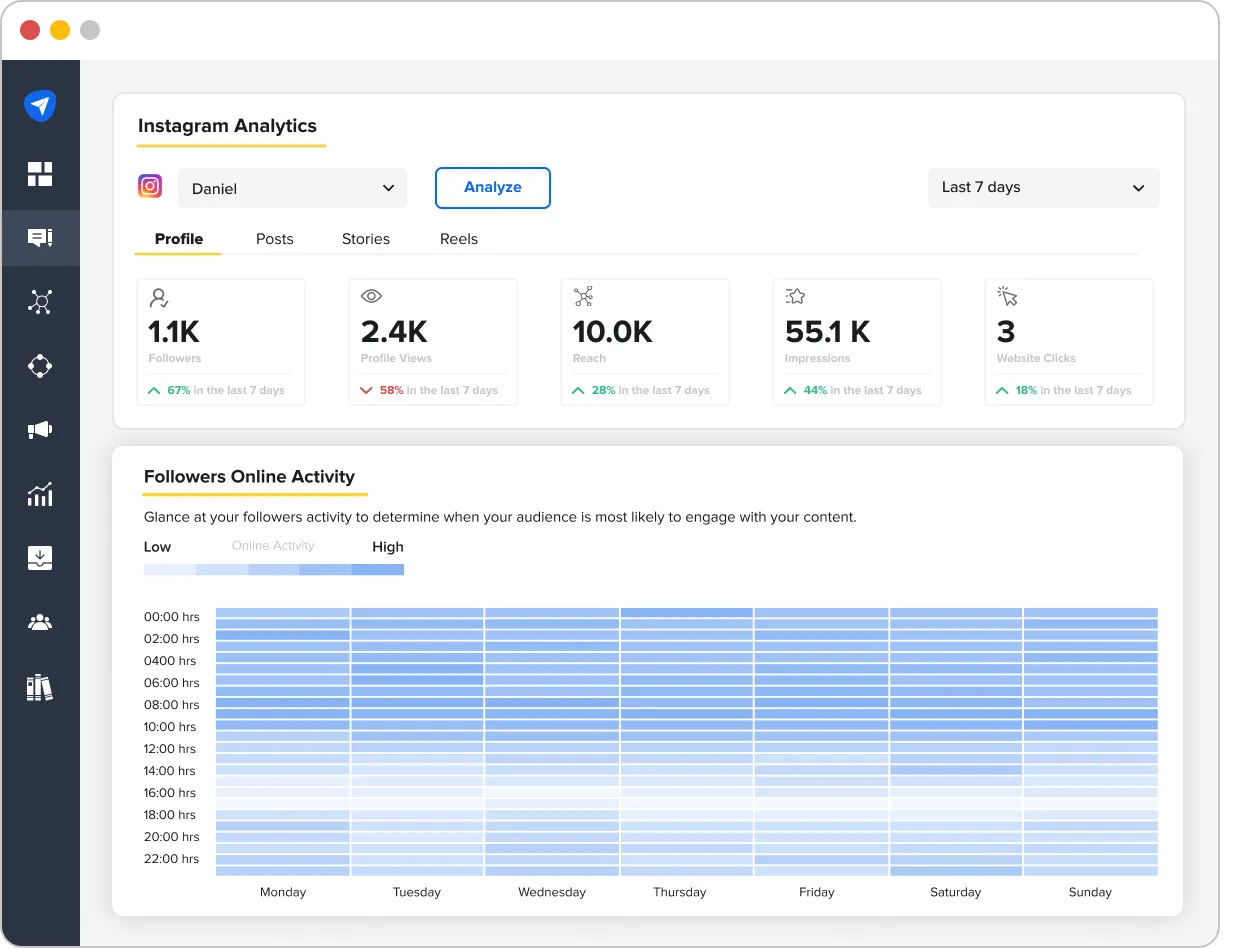
Gathering all this data will allow you to experiment with different posting frequencies and times to find the optimal posting schedule.
That is a wrap from our side.
By following these detailed steps, you can conduct a comprehensive Instagram audit that yields in-depth insight into your performance and helps you optimize your strategy for 2024.
Instagram Audit Template
If you want to get a headstart, use our ready-mate audit template to conduct a data-driven audit that yields fruitful insights.
This detailed template will guide you through a comprehensive process, helping you identify your strengths, weaknesses, and opportunities for improvement in your Instagram strategy.
Let’s look at some tools that you can use to run an audit.
Best Instagram Audit Tools
With the right tools, performing an Instagram audit can be much easier and more effective. We have researched and compiled a list of tools that will provide valuable insights, streamline the audit process, and help you make data-driven decisions.
SocialPilot
SocialPilot is a comprehensive social media management tool with powerful Instagram analytics and reporting features. It helps you track key performance metrics, analyze engagement, and optimize your content strategy. You can create a customized report with all the key data and share it with your team and clients.
Conduct Your Instagram Audit
Mentionlytics
Mentionlytics is a powerful social media monitoring tool that helps you track mentions, monitor brand reputation, and examine your social media performance. You can track mentions of brands, competitors, and industry keywords.
You can understand the sentiment behind those social media mentions and how your brand is perceived online. It lets you generate detailed reports on performance and mentions.
BuzzSumo
BuzzSumo is a content research and analysis tool that lets you discover popular content formats and tops that engage your audience. It also lets you analyze your content and break down your competitors’ content performance. You can analyze which content is working for them, how your content compares with them, and benchmark your performance against them.
Instagram Audit Checklist
Finally, you have got your hands on the framework to conduct a perfect audit, template, and tools, but are you sure you haven’t overlooked any important metrics?
Don’t worry; we have created an Instagram audit checklist that covers a comprehensive list of all the tasks and criteria designed to help you systematically review and analyze your profile.
This checklist covers all the important aspects of your account, including profile information, content quality, engagement metrics, audience analysis, and benchmarks. This checklist will serve as a guide, ensuring all critical areas are evaluated during an audit.

Run a Successful Instagram Audit
After many long hours, you are finally done with the Instagram audit. Conducting a thorough audit every couple of months can help you surface long-standing issues in your content strategy, such as inconsistent branding and fake followers, and utilize it to engage with your audience effectively.
We have covered it all for you, whether it’s showing how to run a successful audit, providing a template, a list of handy tools, or a final checklist for final assurance.
Happy auditing!





